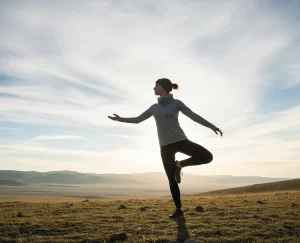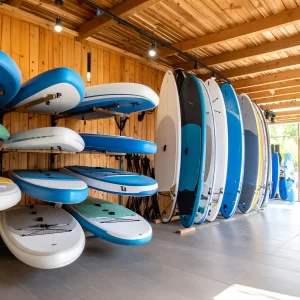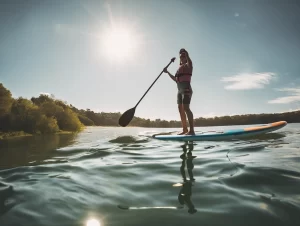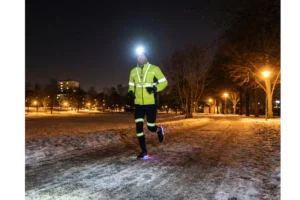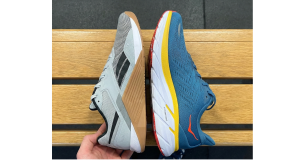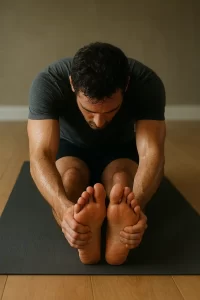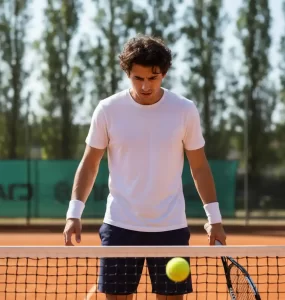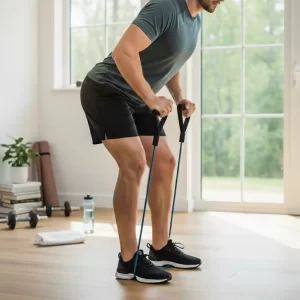START
SUP
SUP (Stand Up Paddleboarding) is a versatile and enjoyable water sport that offers a unique combination of adventure, relaxation, and fitness, accessible to all skill levels.
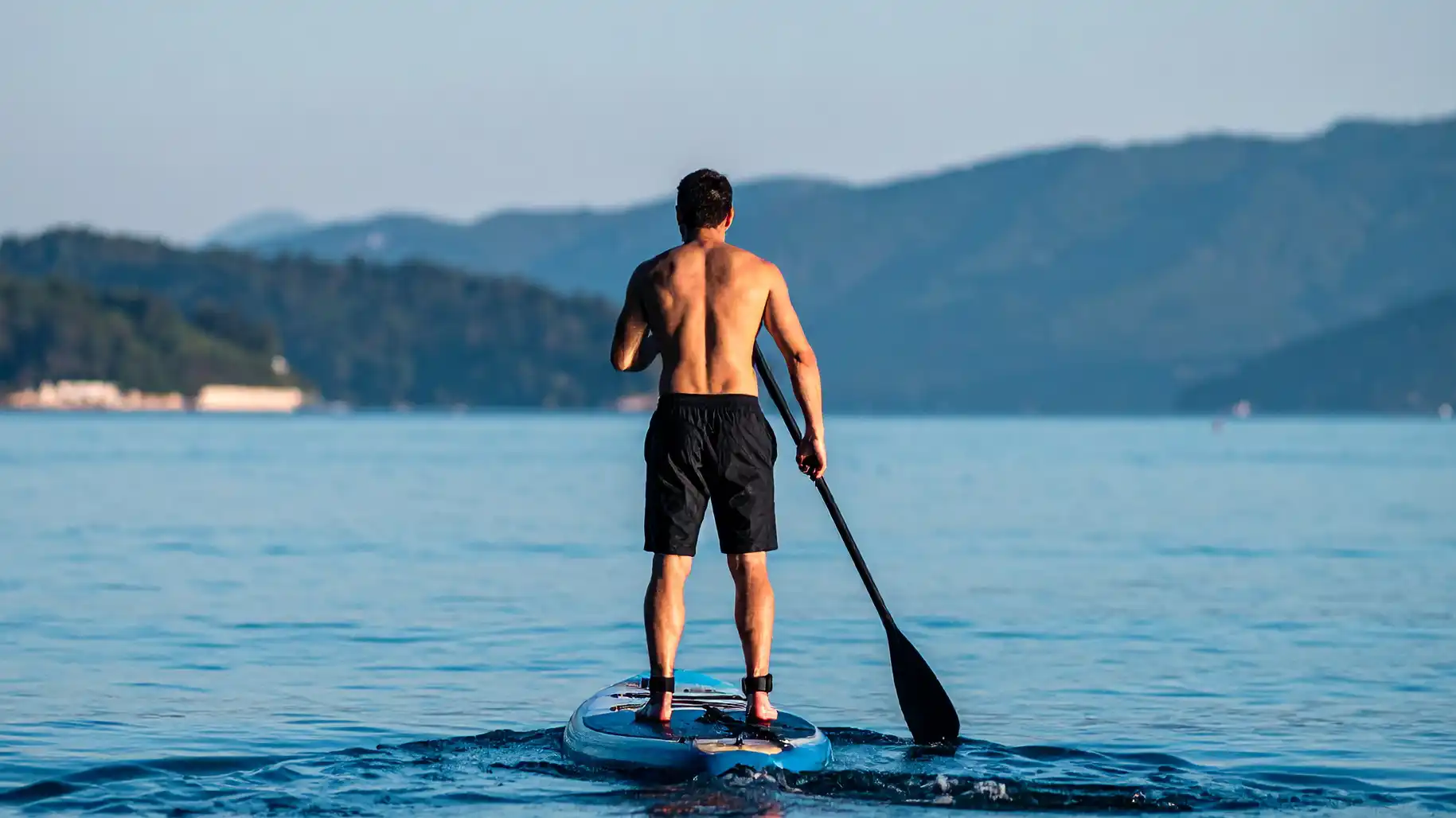
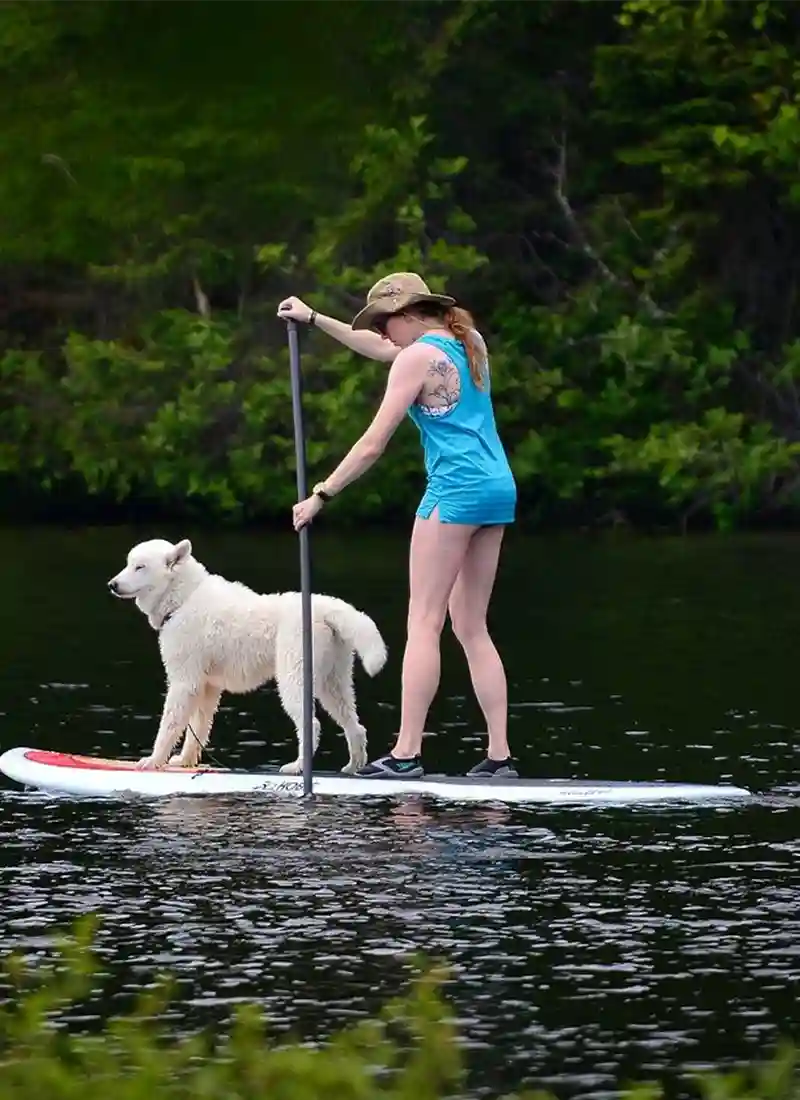
TIPS TO START
- Choose the Right Equipment: Start with a wider, longer, and more stable board and ensure the paddle is about 6-10 in (15-25 cm) taller than you for efficient paddling.
- Use a Leash: Always attach the leash to your ankle or calf. This keeps your board close if you fall off.
- Start in Calm, Flat Water: Begin in calm waters such as a lake or a quiet river to practice balancing and paddling.
- Check the Weather and Water Conditions: Avoid windy conditions and strong currents, especially as a beginner.
- Practice Standing Up: Start kneeling on the board, then move to a standing position using your hands for support.
- Keep Your Feet Parallel and Spread Wide: Stand in the middle of the board with your feet parallel, about hip-width apart.
- Look at the Horizon for Balance: Keep your gaze fixed on the horizon, not down at your feet, to maintain balance.
- Practice Falling & Getting Back On: Learn the safest way to fall (away from the board) and practice getting back on your board from the water.
Go ahead and take the plunge – the water’s waiting!
BASIC EQUIPMENT
- SUP Board: Beginners should opt for wider, longer, and thicker boards for better stability.
- Paddle: Should be about 6-10 inches taller than you; materials vary by weight and performance.
- Personal Flotation Device (PFD): USCG-approved life vest required in many areas.
- Leash: Keeps your board attached to you for safety.
- Proper Clothing: Wetsuit or drysuit in cold water; quick-dry clothing in warm conditions.
- Waterproof Bag: Keeps essentials dry, such as phone and snacks.
- Sun Protection: Sunscreen, hat, UV-protective clothing.
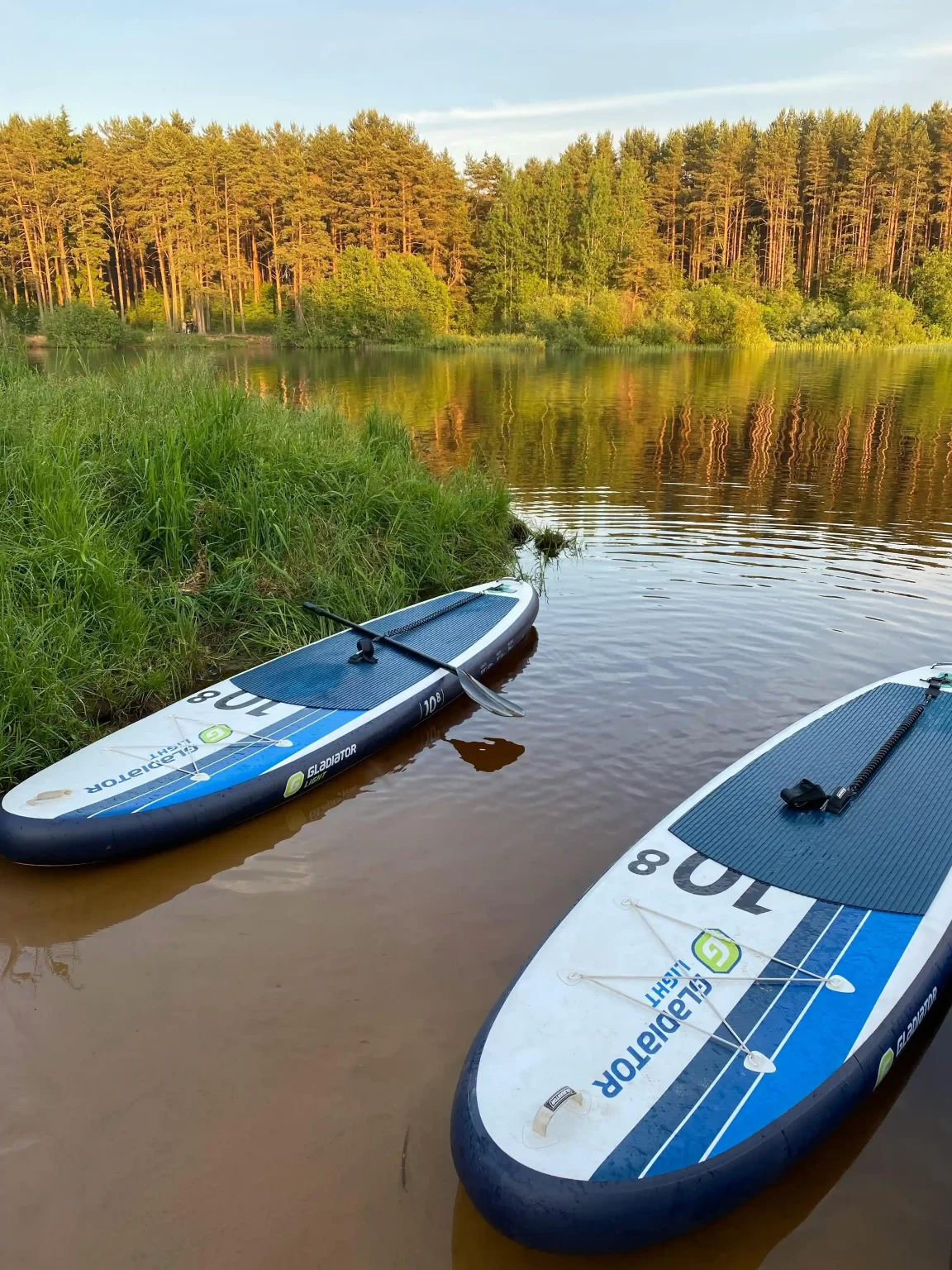
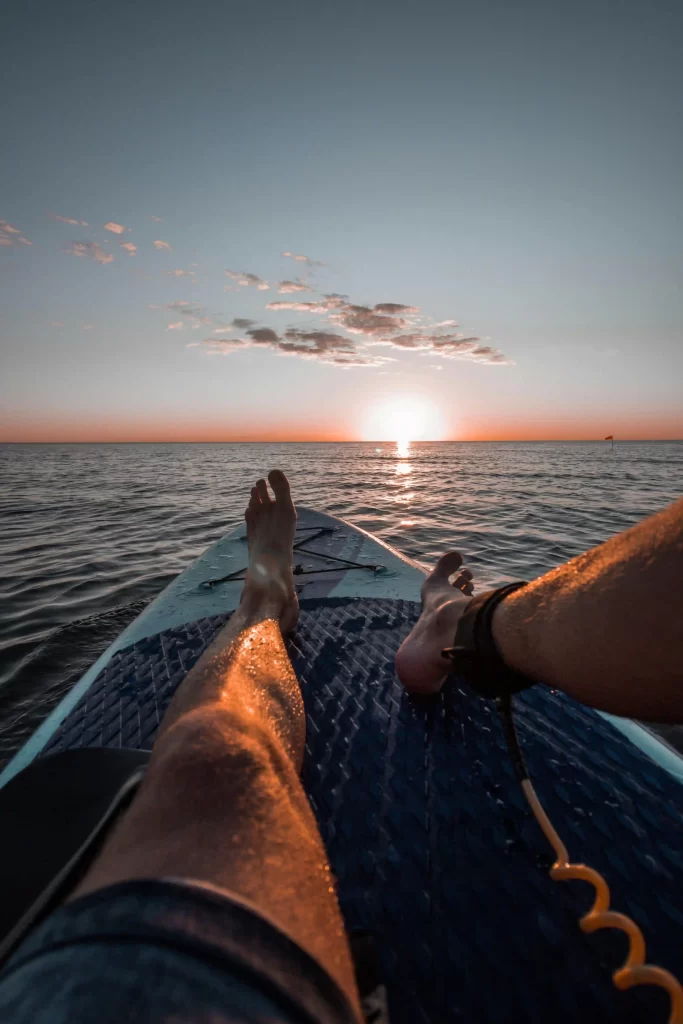
MAIN MUSCLES
SUP is an excellent full-body workout that engages multiple muscle groups. Here’s a list of the primary muscles trained when beginning SUP:
- Core Muscles: The abdomen and lower back maintain balance and stability.
- Shoulder Muscles: Deltoids and rotator cuff used extensively in paddling.
- Upper Back Muscles: Engaged to pull the paddle through the water.
- Arms: Biceps and triceps drive the paddling motion.
- Leg Muscles: Maintain balance and stance on the board.
COMMON INJURIES
SUP is relatively low-impact, but like any physical activity, it comes with a risk of injuries.
- Shoulder Strain: Frequent paddling can lead to rotator cuff tendinitis or impingement.
- Back Pain: Improper posture or prolonged sessions can cause lower back issues.
- Ankle Sprains: Falling off and landing awkwardly may sprain ankles.
- Knee Injuries: Twisting improperly when falling or rigid stance risks ligament strains.
- Sunburn: Long sun exposure without protection can cause severe sunburn.
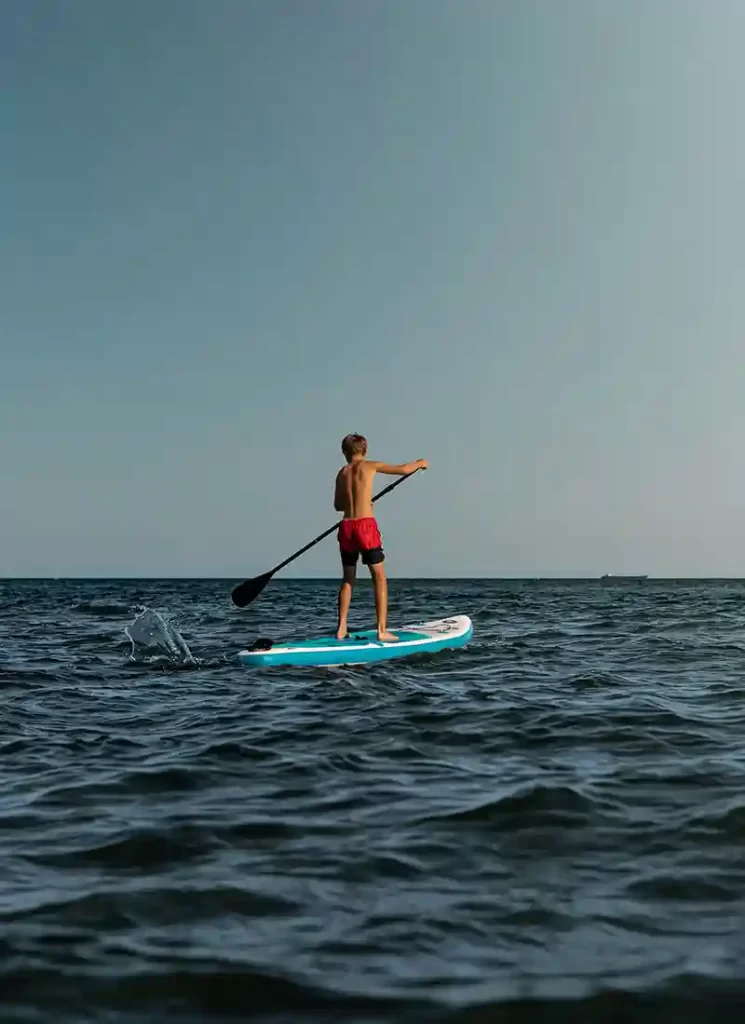
The Secret to Balance: Look at the Horizon, Not Your Feet
If you’ve ever tried balancing on one leg or walking along a narrow path, your first instinct is probably to stare down at your feet. It feels safer—like if you watch every step, you’ll somehow keep yourself steady. But here’s the twist: the more you focus on the ground, the…
Read more →
SUP Buying Guide for Beginners
Stand-up paddleboarding (SUP) is a fun and accessible way to enjoy the water, but choosing your first board can be confusing with so many options available. This guide will help you make an informed decision and get started with confidence. 1. Decide How You’ll Use Your SUP Think about where…
Read more →
First SUP Outing: What to Expect and How to Prepare
Embarking on your first Stand Up Paddleboarding (SUP) adventure is an exciting prospect, but it can also be a bit daunting if you’re not sure what to expect. Proper preparation is key to ensuring that your initial experience on the water is both enjoyable and safe. From packing the right…
Read more →
Night Running Safety Guide: Essential Gear & Tips for Winter
Winter is here, and with it comes shorter days and longer nights. For many of us with 9-to-5 jobs, that often means our only time to exercise is when the sun is down. Running at night can be incredibly peaceful—the streets are quieter, and the air is crisp—but it does…
Read more →
How to Choose Sports Shoes
When starting a new sport, one of the main issues you face is buying gear—especially the footwear. Walking into a sports store and staring at a wall of 500 different shoes that all look exactly the same but cost wildly different prices can cause serious confusion and anxiety. However, if…
Read more →
How Temperature Affects Your Flexibility
I bet you have heard about hot yoga, a huge trend that has been aroynd for years, promising deeper stretches and greater flexibility thanks to those super-heated rooms. But does increasing the temperature actually lead to better, long-term flexibility gains? Let’s examine how the science to see how different room…
Read more →
The Mental Game: A Beginner’s Guide to Handling Frustration
So, you’ve started playing tennis. You’ve probably realized by now that the ads showing smiling people hitting perfect, effortless shots are misleading. The reality is much closer to clips of top players smashing their rackets in frustration. You’re beginning to understand why—this sport involves a lot of swinging and missing,…
Read more →
Running Is Simple. The Internet Is Not.
You’ve decided to start running. Maybe you’ve seen the relentless online enthusiasm for its life-changing benefits, or perhaps you were inspired watching people crush races, from a local 5K to a full-blown Marathon. You wanted a piece of that feeling, so you laced up your shoes and hit the road.…
Read more →
The 10-Minute Strength Solution: Short Workouts for Beginners
When you think about starting strength training, the first image that might come to mind is spending hours in a gym surrounded by heavy weights and complicated machines. For beginners, that picture can feel overwhelming and a little discouraging. The truth is, you don’t need long, exhausting workouts to see…
Read more →
